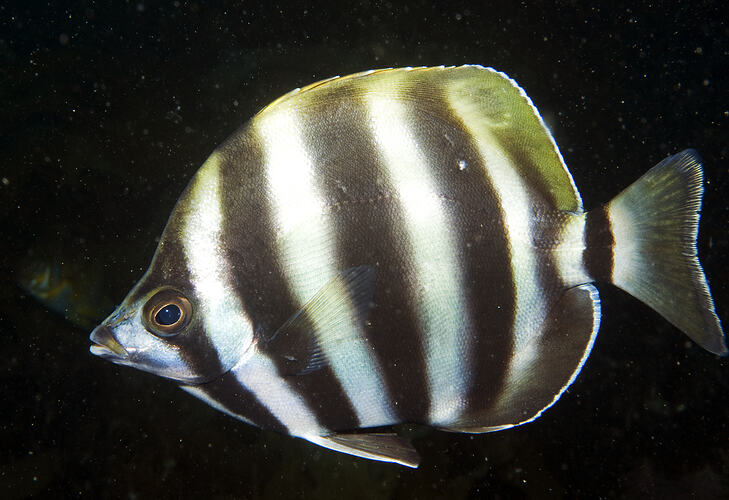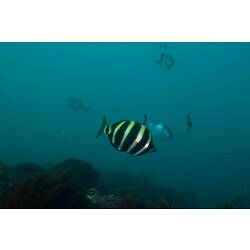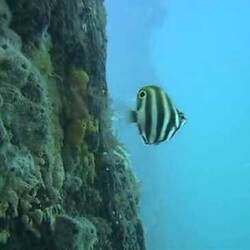General Description
Body very deep, compressed, head narrow with a pointed snout; scales tiny, extending well onto bases of the rounded dorsal and anal fins. Silvery-white with five or six broad black bands; juveniles with a black ocellus or "false eye-spot" on rear of dorsal and anal fins. Usually 20 cm long head to tail tip (up to 36 cm).
Biology
This species is easily recognised due to their banded pattern, similarity to tropical butterflyfishes, for which they are sometimes mistaken, and false eye-spots in juveniles. Adults are often seen in pairs near ledges and caves on coastal reefs, while juveniles inhabit shallow estuaries and protected bays, and may be seen in tide pools.
Distribution
Southern Australia.
Habitat
Inshore rocky reefs.
More Information
-
Animal Type
-
Animal SubType
-
Brief Id
Body deep, compressed, snout pointed, silvery-white with black vertical bands, juveniles with "false eye-spots".
-
Habitats
-
Diet
Carnivore
-
Diet Categories
Crustaceans, Worms
-
Endemicity
-
Commercial
No
-
Conservation Statuses
CITES: Not listed, FFG Threatened List: Not listed, EPBC Act 1999: Not listed, IUCN Red List: Not listed
-
Depths
Shallow (1-30 m)
-
Water Column Locations
On or near seafloor
-
Taxon Name
-
Scientific Author
(Richardson, 1842)
-
Common Name
Moonlighter
-
Kingdom
-
Phylum
-
Subphylum
-
Superclass
-
Class
-
Order
-
Family
-
Genus
-
Species Name
sexfasciatus




